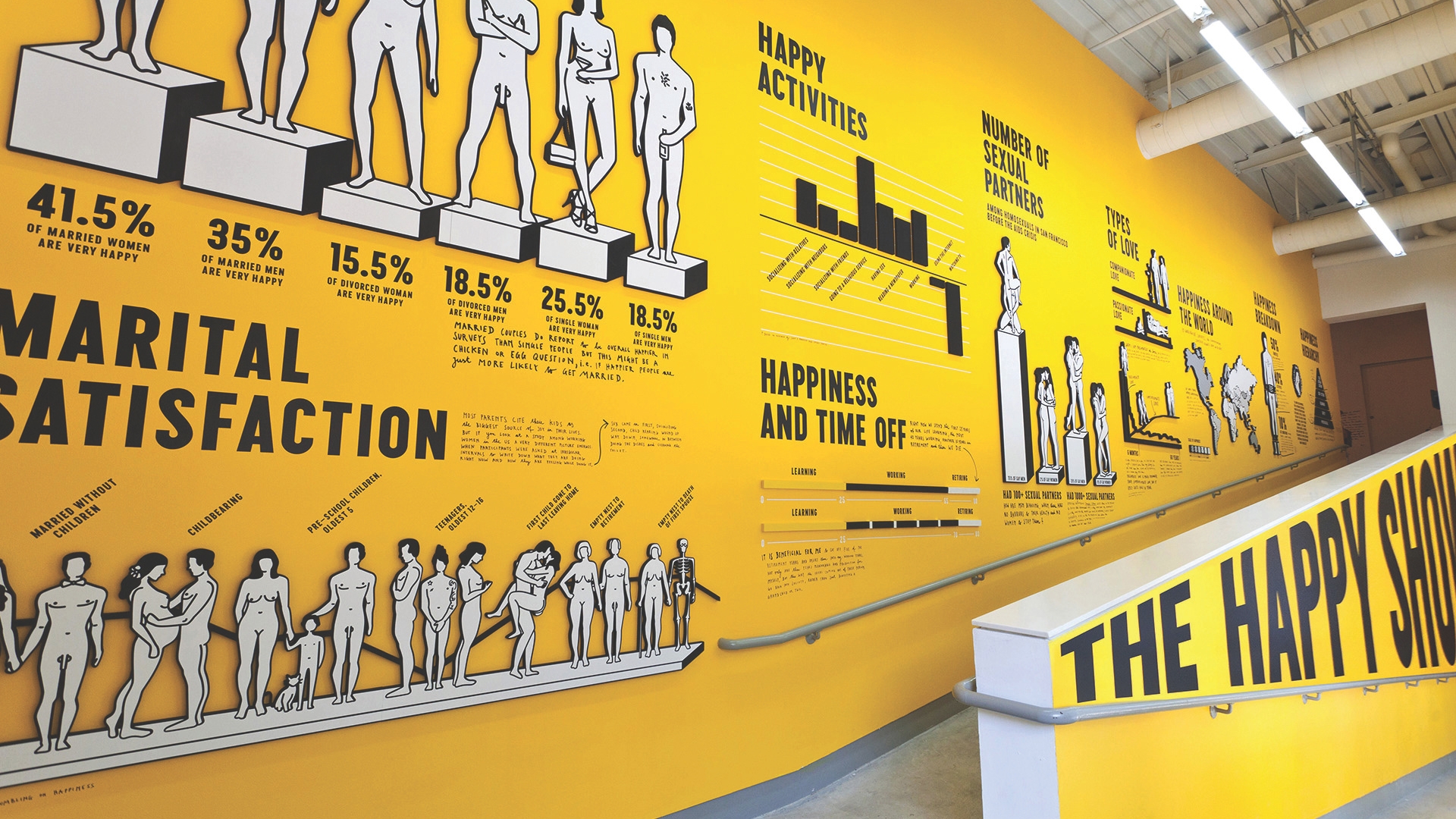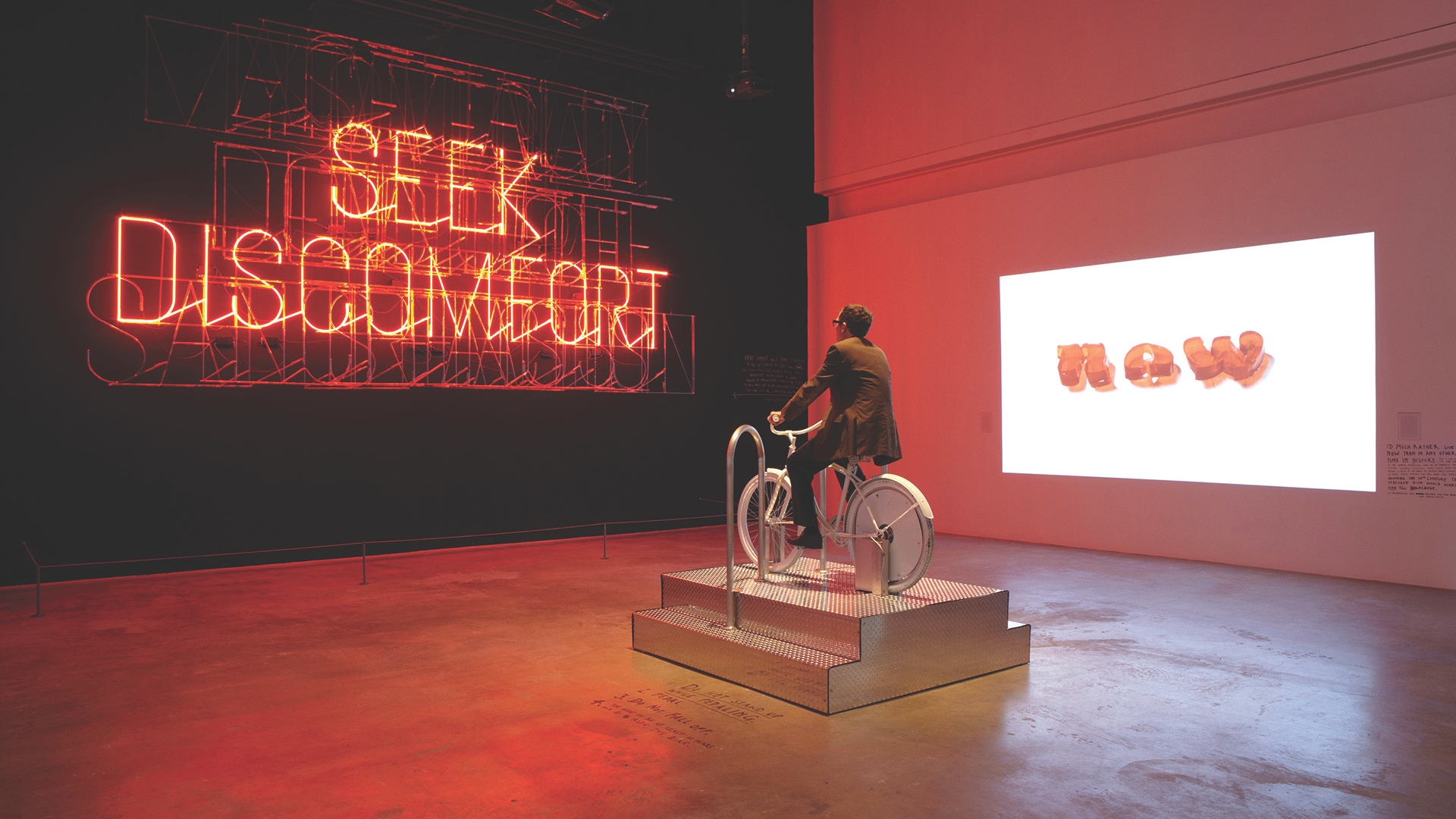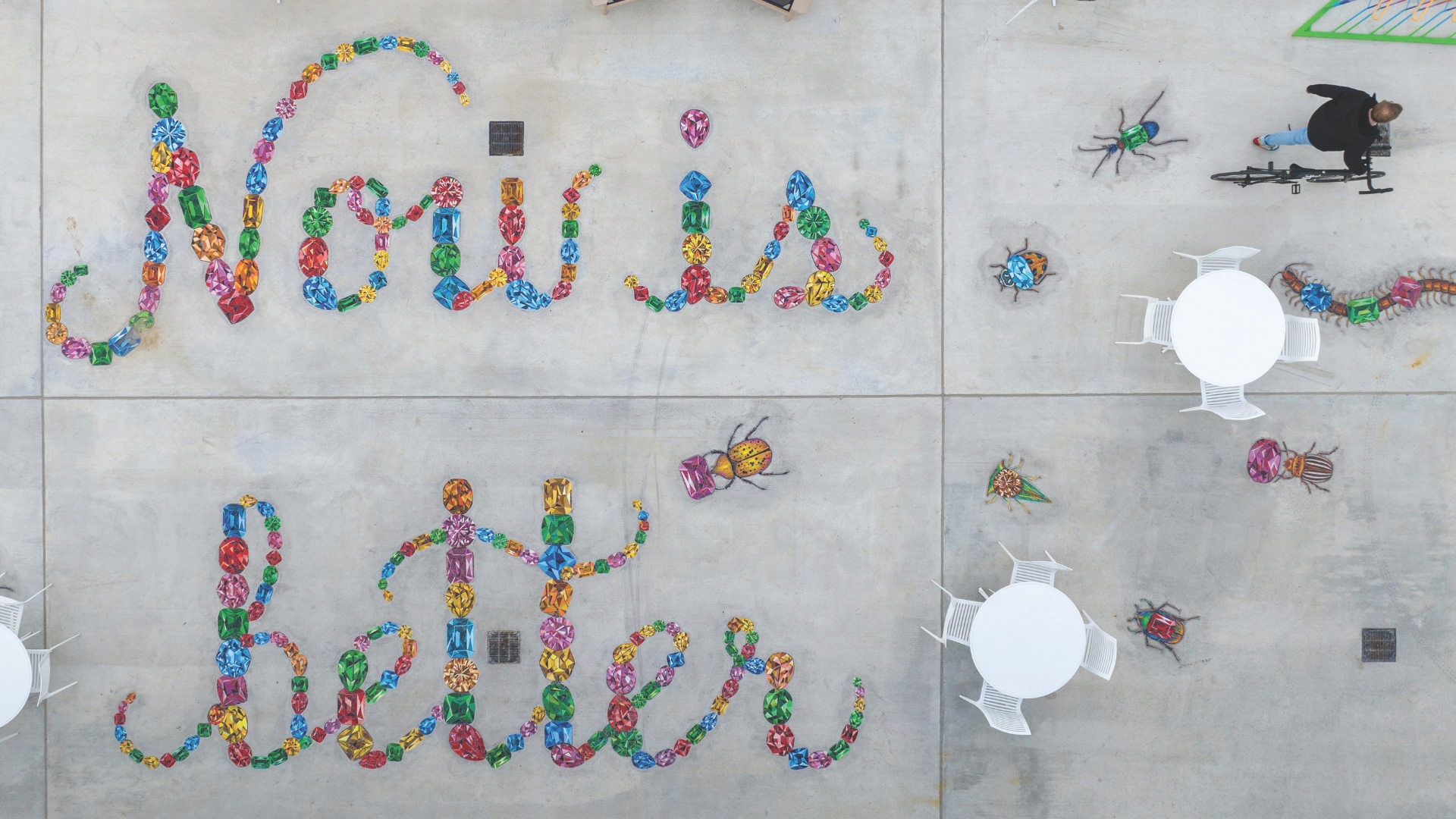Stefan Sagmeister

Photo credit: James Braund
2024 SEGD Fellow
Known for his unorthodox and provocative designs, Austrian graphic designer and typographer Stefan Sagmeister has made a significant impact on the design- world, having worked for clients as diverse as The Rolling Stones, HBO, and the Guggenheim Museum.
Born in Austria in 1962, Stefan Sagmeister began his design career at 15, working with the youth magazine Alphorn. After studying in Vienna and New York, he worked at Leo Burnett in Hong Kong. In 1993, he joined Tibor Kalman’s M&Co in New York, where Kalman became a pivotal influence. That same year, Stefan founded his own studio, Sagmeister Inc., shaping iconic designs for major artists and brands.
Stefan is acclaimed for his exploration of the profound themes of happiness and beauty. His projects delve into how design can influence our emotional well-being and aesthetic appreciation. The exhibition “The Happy Show,” which toured globally, combined data visualization, self-experimentation, and graphic design to provide insights into what makes people happy.
In 2018, Stefan and his design partner Jessica Walsh organized the critically acclaimed exhibition “Beauty” at the Museum Angewandte Kunst in Vienna. The show explores the impact of beauty on our emotions and behaviors and continues to travel in updated forms, reflecting Stefan’s deep engagement with this timeless subject.
Stefan’s impressive career includes winning two Grammy Awards for his album art: one for the Talking Heads box set “Once in a Lifetime” in 2005, and another for David Byrne and Brian Eno’s “Everything That Happens Will Happen Today” in 2010. An educator as well as a designer, he teaches at the School of Visual Arts in New York and has been appointed as the Frank Stanton Chair at the Cooper Union School of Art.
Notably, Stefan Sagmeister takes a year-long sabbatical every seven years to focus on personal projects and experimentation, underscoring his commitment to creativity and innovation. His contributions to design have been recognized with numerous awards, including the 2013 AIGA Medal and the Golden Medal of Honor of the Republic of Austria in 2013. Stefan Sagmeister’s work continues to inspire and challenge the status quo, making him a pivotal figure in contemporary design, especially in his explorations of happiness and beauty.

Photo courtesy of ICA Philadelphia

Photo courtesy of ICA Philadelphia
Do you believe that good design makes an impact on how people move and experience space?
It’s very clear that surroundings not only shape the way we feel but also shape the way that we behave. All of us who live in cities are 100 percent surrounded by designed spaces. Everything that we encounter—including parks and city planning all the way down to the building that I’m in, the room that I’m in, the clothes that I wear and the computer I sit in front of—has been designed. And all of these design decisions can be good ones or bad ones, but they all have an influence on us.
What do you value most about designing for the general public?
I was always kind of suspicious of design for designers. You can see that in numerous cases throughout my design life. When a medium ceased to be able to talk to a large audience, that medium lost its luster for me. Our exhibitions, like the one on beauty or the one on happiness, were 100 percent designed for the general audience. The reason these exhibitions had hundreds of thousands of visitors was, of course, exactly that. Sometimes they were criticized by avant-garde designers because they thought it was too accessible, but I didn’t care. That’s not the audience I talk to.
How do you go about ensuring that your work resonates with such a wide audience?
I think it’s about creating work that’s visually compelling and thought-provoking but also approachable. You want people to feel like they can engage with it, even if they don’t have a background in art or design. It’s about finding that balance between making something that’s intellectually stimulating but also emotionally resonant. You want to create a connection with the viewer, something that stays with them after they walk away. That’s always the goal for me.
You’ve worked on large public projects around the globe. Do you find that the challenges you encounter are more cultural or bureaucratic?
It’s a mix of both, I would say. Bureaucracy is definitely a big one. If you’re dealing with a city government, there are just so many layers to work through, and you have to get buy-in from so many different departments. It’s not just about getting the approval; it’s also about getting the enthusiasm and support you need to move forward. Culturally, there can be resistance as well, especially if what you’re proposing is something very new or different from what people are used to. But I find that once people see the potential impact and start to get excited about it, that cultural resistance often melts away. It’s really about building that excitement and getting people on board with your vision.

Photo courtesy of Ledger, Bentonville

Photo courtesy of Vienna 3420
What can you tell us about your most recent book, Now Is Better?
Negative things like scandals and catastrophes happen very quickly, while positive things are often developed very, very slowly. I am 100 percent convinced that we need a balance between the two. We need the information about long-term developments just as much as we need the information about short-term developments. Now Is Better concentrates on positive, long-term developments. I’m making data visualizations with my team that manifest these developments—everything from positive developments in the environment to how female voting has developed over the last hundred years. Almost all of these things have been measured, and all of them have improved significantly.
How can designers work to keep these long-term developments front of mind?
It’s much easier to get somebody’s attention with negativity. And I would say it’s an incredible challenge for the design community to not give in to the easy thing. Challenge yourself to make something positive. As designers, we have the advantage of time. We don’t have to post every hour. We can give long-term developments some time, but it’s still more difficult because the reason that the media is so negative is because it works. Negativity is the easiest thing to do. So that’s the challenge.
What role does fear play in your life and work?
I once heard a young Brazilian designer tell me that when he does something new, he has this feeling of butterflies in his stomach. He looks for that feeling as reassurance that he’s actually doing something new and sees the absence of the butterflies as proof that he’s just repeating himself. Almost all of us lead such safe lives that we have to find techniques to overcome our avoidance of fear. I’m not always strong, but when I feel fear, I have to force myself over that hump. If I consciously overcome fear, I always make a mental note to myself to check how it went. It almost always goes well.
You take a year-long sabbatical every seven years. How do these sabbaticals affect your design work?
I have already done three sabbaticals, which were a space for decisively exploring new directions I had not tried before. This sabbatical will be different because the disruption, in this case, will be more place-oriented. We are doing it in three Spanish-speaking cities for four months each, and I already know that will have an influence on the work. With the first sabbatical, I had to overcome a big hump of fear because I thought, “Oh my God, we’re going to be forgotten.” And now, I have none of those kinds of fears. I know it’s going to work because the three previous ones had such big impacts on the studio. They were very enjoyable to do and yielded the kind of projects that I believe were worthwhile.
People also viewed
-
The 2024 SEGD Class of Fellows

The 2024 SEGD Class of Fellows